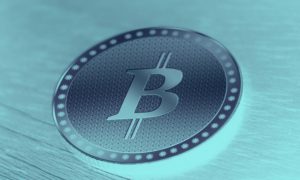
Governor Brainard: Private Money and Central Bank Money as Payments Go Digital: an Update on CBDCs
Posted on 05/25/2021
At the Consensus by CoinDesk 2021 Conference, Washington, D.C. (via webcast), Governor Lael Brainard issued her speech called “Private Money and Central Bank Money as Payments Go Digital: an Update on CBDCs”.
The start of it reads, “Technology is driving dramatic change in the U.S. payments system, which is a vital infrastructure that touches everyone.1 The pandemic accelerated the migration to contactless transactions and highlighted the importance of access to safe, timely, and low-cost payments for all. With technology platforms introducing digital private money into the U.S. payments system, and foreign authorities exploring the potential for central bank digital currencies (CBDCs) in cross-border payments, the Federal Reserve is stepping up its research and public engagement on CBDCs. As Chair Powell discussed last week, an important early step on public engagement is a plan to publish a discussion paper this summer to lay out the Federal Reserve Board’s current thinking on digital payments, with a particular focus on the benefits and risks associated with CBDC in the U.S. context.2
Sharpening the Focus on CBDCs
Four developments—the growing role of digital private money, the migration to digital payments, plans for the use of foreign CBDCs in cross-border payments, and concerns about financial exclusion—are sharpening the focus on CBDCs.
First, some technology platforms are developing stablecoins for use in payments networks.3 A stablecoin is a type of digital asset whose value is tied in some way to traditional stores of value, such as government-issued, or fiat, currencies or gold. Stablecoins vary widely in the assets they are linked to, the ability of users to redeem the stablecoin claims for the reference assets, whether they allow unhosted wallets, and the extent to which a central issuer is liable for making good on redemption rights. Unlike central bank fiat currencies, stablecoins do not have legal tender status. Depending on underlying arrangements, some may expose consumers and businesses to risk. If widely adopted, stablecoins could serve as the basis of an alternative payments system oriented around new private forms of money. Given the network externalities associated with achieving scale in payments, there is a risk that the widespread use of private monies for consumer payments could fragment parts of the U.S. payment system in ways that impose burdens and raise costs for households and businesses. A predominance of private monies may introduce consumer protection and financial stability risks because of their potential volatility and the risk of run-like behavior. Indeed, the period in the nineteenth century when there was active competition among issuers of private paper banknotes in the United States is now notorious for inefficiency, fraud, and instability in the payments system.4 It led to the need for a uniform form of money backed by the national government.
Second, the pandemic accelerated the migration to digital payments. Even before the pandemic, some countries, like Sweden, were seeing a pronounced migration from cash to digital payments.5 To the extent that digital payments crowd out the use of cash, this raises questions about how to ensure that consumers retain access to a form of safe central bank money. In the United States, the pandemic led to an acceleration of the migration to digital payments as well as increased demand for cash. While the use of cash spiked at certain times, there was a pronounced shift by consumers and businesses to contactless transactions facilitated by electronic payments.6 The Federal Reserve remains committed to ensuring that the public has access to safe, reliable, and secure means of payment, including cash. As part of this commitment, we must explore—and try to anticipate—the extent to which households’ and businesses’ needs and preferences may migrate further to digital payments over time.
Third, some foreign countries have chosen to develop and, in some cases, deploy their own CBDC. Although each country will decide whether to issue a CBDC based on its unique domestic conditions, the issuance of a CBDC in one jurisdiction, along with its prominent use in cross-border payments, could have significant effects across the globe. Given the potential for CBDCs to gain prominence in cross-border payments and the reserve currency role of the dollar, it is vital for the United States to be at the table in the development of cross-border standards.
Finally, the pandemic underscored the importance of access to timely, safe, efficient, and affordable payments for all Americans and the high cost associated with being unbanked and underbanked. While the large majority of pandemic relief payments moved quickly via direct deposits to bank accounts, it took weeks to distribute relief payments in the form of prepaid debit cards and checks to households who did not have up-to-date bank account information with the Internal Revenue Service. The challenges of getting relief payments to these households highlighted the benefits of delivering payments more quickly, cheaply, and seamlessly through digital means.”
LINK: https://www.federalreserve.gov/newsevents/speech/brainard20210524a.htm
